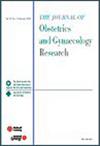Prevalence and predictors of vaginal douching among pregnant women
Abstract
Aim
This study aimed to determine the prevalence of vaginal douching and its predictors among pregnant women.
Methods
This cross-sectional and multi-center study was conducted from March to November 2024, involving 1523 pregnant women receiving routine antenatal care at four government hospital obstetric outpatient clinics. Data were collected using a structured questionnaire addressing personal and vaginal douching practices. Statistical analyses were performed at a significance level of p < 0.05.
Results
The prevalence of vaginal douching among the participants was 30.7%. The primary motivation for vaginal douching was personal hygiene, with water being the most frequently used substance. Information about the practice was predominantly obtained from family elders, friends, or individual experience. Misconceptions regarding the hygienic and health implications of vaginal douching were prevalent among participants. Despite awareness of its association with genital infections or related problems, many participants continued the practice. Multiple logistic regression analysis identified significant predictors of vaginal douching, including perceptions that it is hygienic, healthy, and associated with risks of genital infections/problems; a history of genital infections/problems within the previous year; receiving information about vaginal douching from family elders; engaging in sexual intercourse 1–2 times per week during the current pregnancy; being in the third trimester; being unemployed; and having completed secondary or high school education. The independent variables accounted for 73.9% of the variance in the dependent variable (p < 0.05).
Conclusions
This study provides essential insights into the prevalence of vaginal douching among pregnant women and highlights their perceptions and motivations for engaging in this practice.

 求助内容:
求助内容: 应助结果提醒方式:
应助结果提醒方式:


